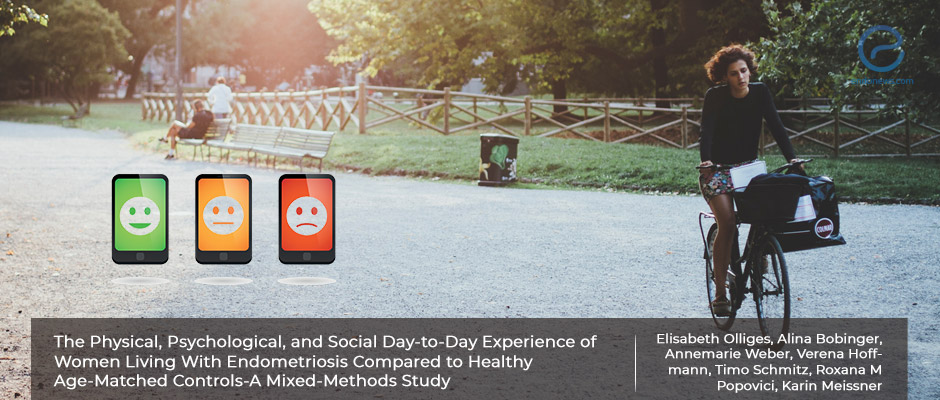The consequences of endometriosis on the quality of life
Mar 30, 2022
Women with pathologically-confirmed endometriosis have diminished quality of life compared to age-matched healthy women.
Key Points
Highlights:
- The lives of women having endometriosis are adversely affected in physical, social, and mental aspects due to the disease-associated symptoms.
Importance:
- Pain, as the main symptom of endometriosis, and the lack of curative treatment result in impairment of physical, social, and mental aspects of life in women having endometriosis.
What’s done here?
- This prospective observational study assesses the quality of life and to get information about the daily life of women with endometriosis compared to age-matched healthy women.
- Only biopsy-confirmed endometriosis was included in the study population.
- Psychotropic drugs or hormonal drug users, having any mental illness or malignant disease, pregnancy, and current breastfeeding were excluded from both groups.
- Semi-structured interviews, standardized questionnaires, and a comprehensive diary were performed to evaluate pain ratings and premenstrual dysmorphic disorder symptoms.
Key results:
- A total of 11 endometriosis patients and 12 healthy controls who met the eligibility criteria were included in the study.
- Significant differences between endometriosis patients and the control group were observed in terms of anxiety and depression scores, mental and physical quality of life, physical symptoms, stress ratings, and functional well-being according to standardized questionnaires.
- The highest score for maximum pelvic pain and dyschezia were detected in endometriosis patients during the menstruation phase.
- However, both mean and maximum scores for pain and dyschezia were found higher in endometriosis patients compared to the control group through the menstrual cycle.
- Premenstrual dysphoric disorder symptoms (depressed mood, anxiety, affective lability, anger/irritability, difficulty in concentrating, lethargy, hypersomnia/insomnia, perceived loss of control) were more frequent in endometriosis patients, especially during the menstruation phase.
- Endometriosis resulted in impairment of everyday life based on the qualitative interviews.
- Impaired social interactions, restricted participation in daily life, and impaired occupational performance experienced by endometriosis patients.
Strengths and Limitations:
- This is the first mixed-methods study to collect data from endometriosis patients on a daily basis during the menstrual cycle.
- The small and heterogeneous sample is the limitation of the study.
- Disease-unrelated factors and time since diagnosis could influence the daily life of the participants.
Lay Summary
The most common clinical findings of endometriosis patients are pelvic pain and fertility problems, resulting in impairment of quality of life. These women are affected especially during the menstruation period.
Olliges et al., from Germany and Switzerland, published a study titled “The Physical, Psychological, and Social Day-to-Day Experience of Women Living With Endometriosis Compared to Healthy Age-Matched Controls—A Mixed-Methods Study” in the journal named as Frontiers in Global Women’s Health.
In the study, the authors aimed to evaluate pain ratings and premenstrual dysmorphic disorder symptoms in women with endometriosis using semi-structured interviews, and a comprehensive diary during the menstrual cycle. They also used standardized questionnaires to detect differences in quality of life between endometriosis patients and the healthy age-matched control group.
They found significant differences in anxiety and depression scores, mental and physical quality of life, physical symptoms, stress ratings, and functional well-being between the two groups. Although both mean and maximum scores for pain and dyschezia were found higher in endometriosis patients compared to the control group through the menstrual cycle, the highest score for maximum pelvic pain and dyschezia was during the menstruation phase. These women were also experiencing impaired social interactions, restricted participation in daily life, impaired occupational performance, and premenstrual dysphoric disorder symptoms.
“The symptoms do not appear to act independently, but rather influence each other. This leads to a complex interplay of physical, mental, and social impairments, with pain often being the starting point.” the authors added.
Research Source: https://pubmed.ncbi.nlm.nih.gov/34977863/
endometriosis mixed-methods design everyday-experiences symptom diary interviews bio-psychosocial model

